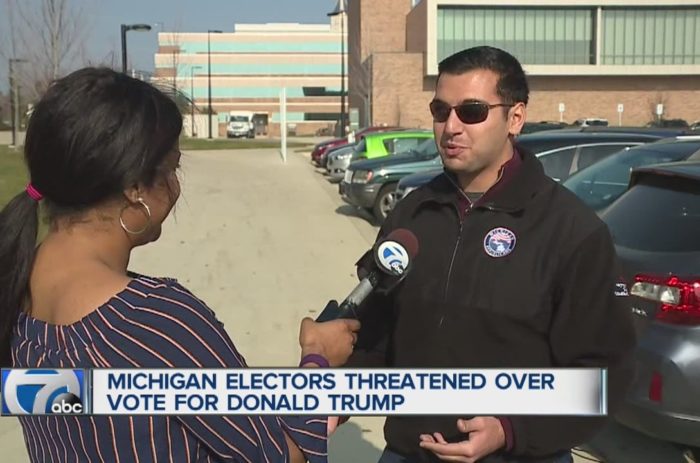The following is an excerpt from OpinionJournal.com’s “Best of the Web” written by the editor, James Taranto.
Big Lies and Little Facts
“This should be considered not merely a scientific scandal but an enormous journalistic scandal,” National Review’s Jonah Goldberg writes about the still-unfolding revelations of dishonesty by global-warmist scientists (noted here yesterday). It’s a critical point:
The elite press treats skepticism about global warming as a mental defect. It uses a form of the No True Scotsman fallacy to delegitimize people who dissent from the (manufactured) “consensus.” Dissent is scientifically unserious, therefore dissenting scientist A is unserious. There’s no way to break in. The moment someone disagrees with the “consensus” they disqualify themselves from criticizing the consensus. . . .
And journalistic skepticism is almost nowhere to be found. If you know people in the “skeptic community” (for want of a better term) or even just normal, honest scientists, the observation that federal and foundation funding and groupthink is driving, or at least distorting, the climate debate is commonplace. But it’s given almost no oxygen in the elite press, because they are in on it.
One might object that journalists are dupes rather than deceivers. After all, the leaked emails and data from the University of East Anglia have been out for only a few days, and there’s still a lot of work to be done sorting through them. But global warmists have not made a secret of their disregard for scientific rigor. Here’s Al Gore, in a 2006 interview with Grist.com:
There’s a lot of debate right now over the best way to communicate about global warming and get people motivated. Do you scare people or give them hope? What’s the right mix?
I think the answer to that depends on where your audience’s head is. In the United States of America, unfortunately we still live in a bubble of unreality. And the Category 5 denial is an enormous obstacle to any discussion of solutions. Nobody is interested in solutions if they don’t think there’s a problem. Given that starting point, I believe it is appropriate to have an over-representation of factual presentations on how dangerous it is, as a predicate for opening up the audience to listen to what the solutions are, and how hopeful it is that we are going to solve this crisis.
Translated into English, “an over-representation of factual presentations on how dangerous it is” means “hype and hucksterism.” By their nature, “presentations on how dangerous it is” are not factual but speculative, and Gore advocates making the speculation as alarmist as possible. “We don’t want the smoking gun to be a mushroom cloud”–that sort of thing.
Gore is a politician by training and now an investor seeking to cash in on environmental alarm, so hucksterism is an occupational hazard. But scientists, who are supposed to be seekers after truth and honest brokers of information, have also sought to justify alarmism at the expense of rigor. This is a quote from Stephen H. Schneider of Stanford University, in a 1989 Discover interview:
On the one hand, as scientists we are ethically bound to the scientific method, in effect promising to tell the truth, the whole truth, and nothing but–which means that we must include all the doubts, the caveats, the ifs, ands, and buts. On the other hand, we are not just scientists but human beings as well. And like most people we’d like to see the world a better place, which in this context translates into our working to reduce the risk of potentially disastrous climatic change. To do that we need to get some broadbased support, to capture the public’s imagination. That, of course, entails getting loads of media coverage. So we have to offer up scary scenarios, make simplified, dramatic statements, and make little mention of any doubts we might have. This “double ethical bind” we frequently find ourselves in cannot be solved by any formula. Each of us has to decide what the right balance is between being effective and being honest. I hope that means being both.
In the article to which we link above, Schneider explains that when he said this, he did not mean to endorse “exaggerating threats” but rather was expressing “my disdain for a soundbite-communications process that imposes the double ethical bind on all who venture into the popular media.”
What he seems to be saying–and we’ll happily post his reply if we’ve got it wrong–is that the media want exaggeration and simplification, and scientists oblige only reluctantly. But news reporters, like scientists, are supposed to be honest brokers of information. Both professions impose an obligation to the truth that is supposed to outweigh any personal or political agenda.
Yet this is not the only area in which journalists disregard that obligation. NewsBusters.org captured a fascinating exchange about so-called health-care reform on “Inside Washington.” The panelists were columnist Charles Krauthammer, Newsweek’s assistant managing editor Evan Thomas and National Public Radio’s Nina Totenberg:
Krauthammer: The fraudulence of these numbers is absolutely staggering, and I’ll explain to you why. The benefits kick in in 2015, so outlays are only for half of that decade. The taxes and the cuts, the presumed spending cuts, all kick in at the beginning. You’ve got 10 years of money in and five years of outlay, so of course it will produce a deficit–I mean, a surplus. If you start of 2015 and go until the end of time, the amount of deficit added every decade is going to be about half a trillion. So once you start–when the program starts, it will be annually–it will cause a huge deficit annually. That is an absolutely phony number that [Sen. Harry] Reid gave us.
Thomas: Charles is right. This bill is a fiscal fraud. I’d still vote for it, because I think it’s a good thing to extend benefits and start down the road to universal and–because of the health insurance. But we have to be–if we were honest about it, we would say that we have not dealt with the money piece of it, with the cost thing, that we’re going to have to deal with. We’re going to kick that down the road and have to deal with it later.
Krauthammer: How do you do that?
Totenberg: The thing about the health care bill, though, is that–the Senate bill–is that it actually tries to do something about costs. It its starts down that road.
Thomas: It doesn’t! It doesn’t, it’s as fake as a $2 bill [sic]. You don’t get serious about costs.
Totenberg: Unlike the House bill, it tries to do things about cost. I am not saying it’s ideal. But we have to start this. But if we don’t get a health care bill this time, it is probably the last chance.
So here we have an editor of what used to be a newsmagazine endorsing what he himself calls “a fiscal fraud,” and an NPR reporter referring in the first person to partisan advocates of a controversial piece of legislation.
Contrast that with the latest “fact check” from the Associated Press, also on the subject of the health-care legislation. Titled “SPIN METER: Legislation Inflation Grips GOP,” it is the work of three reporters, Calvin Woodward and Douglass K. Daniel, who share the byline, and Ann Sanner, who gets a credit at the end of the dispatch. Here is their finding:
The actual bill, which Senate Majority Leader Harry introduced last week, came in at 2,074 double-spaced pages, 84 more pages than the House version, which was already being ridiculed for its size.
“That’s larger than the novel ‘War and Peace,’ ” Republican Sen. Orrin Hatch of Utah said of the Senate bill.
“Exceeding even ‘War and Peace’ in length,” Rep. Roy Blunt, R-Mo., said of the House bill.
Said Rep. Joe Barton, R-Texas: ” ‘War and Peace’–some people consider it the greatest book ever written, but most people recognize the novel because at 1,284 pages its length is often the butt of jokes. Now imagine trying to read something that long overnight.”
Actually, Leo Tolstoy’s tome is longer than either bill. Full translated versions are nearly twice as long.
The bill passed by the House is 319,145 words. The Senate bill is 318,512 words, shorter than the House version despite consuming more paper. Various versions of Tolstoy’s novel are 560,000 to 670,000 words.
It seems there are limits to the “soundbite-communications process” after all. Through the hard work of a trio of reporters, the AP is able to verify that a trivial bit of political hyperbole does not meet the strictest test of literal truth. But don’t sweat the big lies. As Nina Totenberg points out, “if we don’t get a health care bill this time, it is probably the last chance.” It’s the consensus!
For more “Best of the Web” click here and look for the “Best of the Web Today” link in the middle column below “Today’s Columnists.



